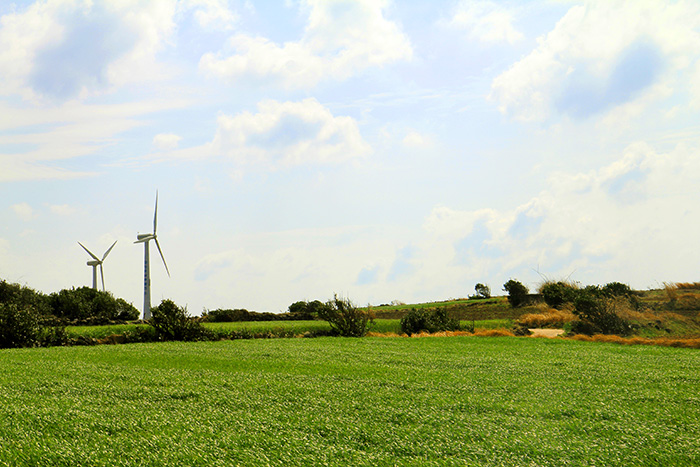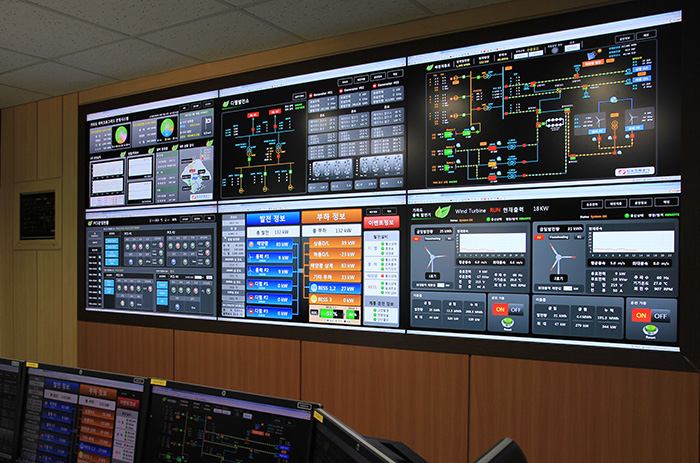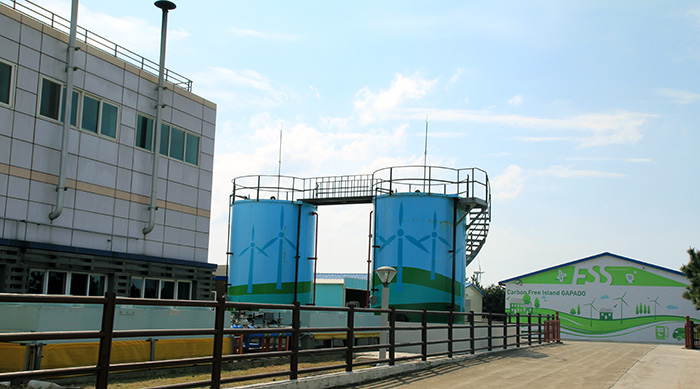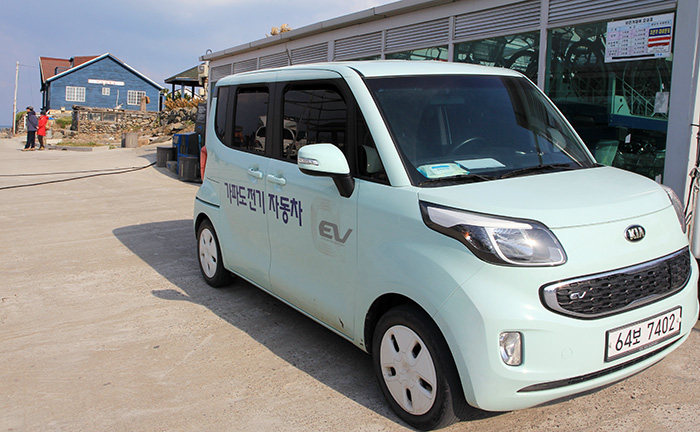View this article in another language
- 한국어
- English
- 日本語
- 中文
- العربية
- Español
- Français
- Deutsch
- Pусский
- Tiếng Việt
- Indonesian

Residents on Gapado Island, a small outcropping 5.5 kilometers south of Jeju Island, rely on wind turbines and solar panels for their energy.
After a 20-minute ferry ride from Moseulpo Port at the southern tip of Jeju Island, Gapado Island welcomes visitors with its green fields of forage barley and two wind turbines, slowly turning like windmills. The wind generators provide the island's 245 residents with green energy.
The two wind turbines generate 500 kilowatts per hour, and 50 solar panels installed on local rooftops make 174 kilowatts per hour. Because Gapado residents use 230 kilowatts per hour at most, the renewable energy is more than plenty to run the whole island.
The remaining energy is stored in an energy storage system (ESS) for later use. The ESS on Gapado Island has a capacity of 3.86 megawatt-hours, which is enough to provide for all the residents for 24 hours.


The micro-grid operation center located in the center of Gapado observes the condition of wind, solar and diesel generators on the island, and the power consumption of residents.
Before the eco-friendly generators were installed, three diesel generators, each producing 150 kilowatts per hour, operated 24 hours per day and were the sole source of energy. However, after 2012, when the wind turbines and solar panels were installed, the old generators were kept as backups. They were only used when the wind turbines and solar panels couldn't produce more than 24 hours of electricity due to abnormal weather conditions.
“When the diesel generators worked all day, the enormous noise was rather stressful,” said a Korea Electric Power Corporation (KEPCO) employee. “Nowadays, electricity is produced silently and I like it very much.”
The energy supply and consumption of the whole island is controlled at a micro-grid operation center in the center of the island. Here, KEPCO workers monitor the wind turbines, solar panels and diesel generators, and the island's overall energy production and consumption. The facility helps the company detect and fix any problems as soon as possible, and prevents power failures.

Gapado Island residents share four electric cars to help keep the island green.
The island’s energy consumption is also eco-friendly. There are four electric cars on the island shared by all the residents: two for households, one for the school and one for the public health center. Electric vehicles do not emit any carbon dioxide and contribute to keeping the island clean.
The changes made on Gapado Island will soon spread across all of Korea, as it is a signatory to the Paris Agreement, a pact regarding climate change. Its goal is to reduce greenhouse gas emissions by 37 percent from business-as-usual levels by 2030.
Currently, test results on the island are being applied to Gasado Island in Jeollanam-do Province, to make it an energy-independent area, too. Plans are afoot to also transform 63 more remote, insular areas, including relatively bigger islands, such as Ulleungdo Island in Gyeongsangbuk-do Province and Deokjeokdo Island in Incheon.
By Kim Young Shin
Korea.net Staff Writer
Photos: Kim Young Shin
ysk1111@korea.kr
Most popular
- Slew of festivals, events scheduled in downtown Seoul in May
- Korea.net welcomes 2025 K-influencers, Honorary Reporters
- 2025 Honorary Reporter class pledges to spread 'real Korea' worldwide
- US urged to exempt tariffs on Korea in first '2+2' trade talks
- Korean culture festival in Cuba marks 1st year of bilateral ties
